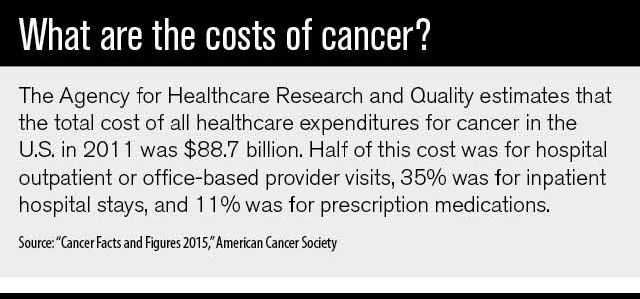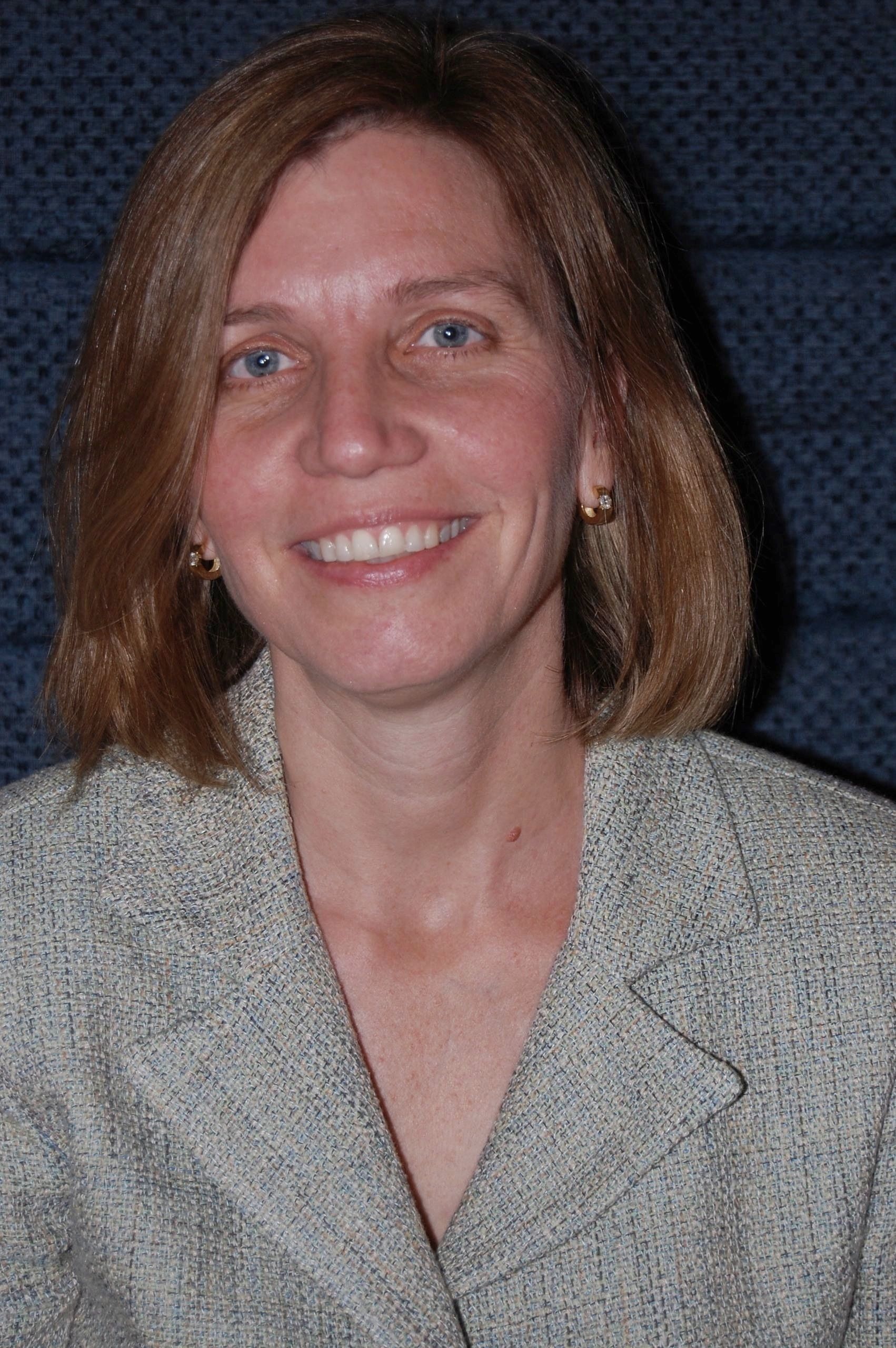Achieving balance: Providing high-value cancer care
How plans can achieve the right balance between cost and outcomes
Eighteen million. That’s the number of people who will call themselves cancer survivors in 2020, according to the National Cancer Institute. This is a 30% increase in cancer survivors since 2010.
While the increased numbers surviving this disease should indeed be celebrated, the cost of treating cancer patients has skyrocketed. The U.S. Department of Health and Human Services’ Agency for Healthcare Research and Quality (AHRQ) says that the cost of treating cancer in 2011 was $88.7 billion. By way of contrast, the National Institutes of Health projects that if newly developed tools for diagnosis, treatment, and follow-up continue to increase in cost, treating cancer in this country could top $207 billion in 2020.

“This is not unexpected due to the U.S. demographics and medical treatment advances since unlocking the human genome,” says Randy Vogenberg, partner at Access Market Intelligence and cofounder of the National Institute of Collaborative Healthcare in Greenville, South Carolina. “The ramping up of investments in healthcare technologies combined with the added boomers’ aging population to the aged population growth rates create a perfect storm for escalating healthcare costs that will significantly challenge patients, providers, and payers of all types.”
UnitedHealthcare and other payers such as Anthem, Inc., and Cigna have developed a series of cancer care plans in an attempt to encourage providers to adhere to evidence-based practices while monitoring (and hopefully leading to a decrease in) treatment costs.

MalinIn July, Anthem introduced its Cancer Care Quality program to oncology practices in the Midwest and Georgia; and the program is scheduled to roll out in Virginia in October. The Cancer Care Quality program includes a series of pathways-or best practices based on the National Comprehensive Cancer Network (NCCN) and other guidelines-for treating nearly 20 different types of cancer, says Jennifer Malin, MD, staff vice president of clinical strategy at Anthem. “When the oncologist uses a particular pathway, they’re eligible for billing for $350 more each month,” she says. “That helps with treatment planning coordination.”
The goal of Anthem’s pathways program is to help ensure that members have access to quality, evidence-based affordable healthcare, says Malin. “More cost-effective and clinically proven treatments typically mean lower drug costs or fewer hospitalizations due to toxicity. If so, savings like this allow us to keep premiums more affordable for members.”
Next: Closer partnerships with oncologists
Closer partnerships with oncologists
Even when considering the reimbursement oncologists receive for a monthly treatment planning coordination fee, the overall costs for the drugs and associated fewer hospitalizations due to toxicity should drive costs lower than they are today, according to Malin.
“Oncology drugs are so expensive that costs are still offset when oncologists choose less toxic, equally effective, but less-expensive drugs,” she says.
Oncologists working with Anthem can choose regimens that are not designated as a cancer treatment pathway and will continue to be reimbursed for visits and cancer drugs according to the terms of the member’s health plan. Malin notes that only pathway regimens are eligible for the enhanced reimbursement. To date, Anthem has identified 34 pathways for breast cancer, 16 for colorectal cancer, and 22 for lung cancer. It recently added pathways for melanoma, myeloma, lymphoma, leukemia, ovarian, pancreatic, prostate, and brain cancers.
Anthem’s Cancer Care Quality program requires oncology practices to register on its web portal, where practices provide information about a patient’s stage of cancer and relevant biomarkers. “We’re starting to take a look at quality measures provided by [the American Society of Clinical Oncology], and we’re feeding that data back to practices,” says Malin. That’s the first stage of the program. We want to make sure that data is provided back to the practice.”
Anthem’s Cancer Treatment Pathways are chosen from therapies that are recommended by national guidelines based on the following criteria:
- Clinical benefit (efficacy);
- Side-effects (toxicity), especially those that lead to hospitalizations or impact quality of life;
- Strength of national guideline recommendations; and
- Cost.
About 70% of the payer’s oncology practices have registered with the portal to participate in the cancer pathways program, says Malin. She adds that the program doesn’t require any contract changes. To date, the program includes Anthem’s commercial, self-funded, and Medicare Advantage lines of business.
While the payer doesn’t yet have solid baseline data regarding how the program is affecting cost and quality, Malin says participating practices are typically choosing the pathway between 60% and 65% of the time. Before the company launched the pathways program, Anthem estimates that practices were choosing these regimes only about 40% to 50% of the time (based on claims data).
Next: Taking a bundled payment approach
Taking a bundled payment approach
Another approach payers are taking to curb cancer care costs is bundled payments. Lee Newcomer, MD, senior vice president of oncology, genetics, and women’s health at UnitedHealthcare, says the payer hopes its episode payment model, which provides a bundled payment to the oncologist, will help identify what’s necessary in treating patients with cancer. Equally important, he says, is determining what can be eliminated-without hurting patients.

Newcomer“Under the current fee-for-service system, the doctors who were trying to be thoughtful were getting penalized because they were being paid less. If they did less, they earned less,” he says.
In a three-year study of 810 breast, colon, and lung cancer patients conducted by UnitedHealthcare with five oncology practices, the episode payment model achieved a 34% reduction in medical costs. Newcomer notes that the patients involved in this study had the same survival rate as fee-for-service patients-though they experienced far fewer complications than fee-for-service patients.
Oncologists participating in the program receive the bundled payment without regard for the type of drugs administered to the patient. As described in a UnitedHealthcare statement, this method of payment has the effect of “separating the oncologist’s income from drug sales while preserving the ability to maintain a regular visit schedule with the patient.” Patient visits are reimbursed using fee-for-service contracted rates and chemotherapy medications are reimbursed based on their average sales price.
More than 60 measures of quality and cost were developed through collaboration between the oncology groups and UnitedHealthcare, according to the payer. Treatment regimens have been evaluated based on the number of emergency room visits, the incidents of complications, side effects, and health outcomes.
“It’s a win for the patient, it’s a win for the payer, and it’s a win for the physician who gets paid better for doing better care,” says Newcomer.
Next: Pursuing collaborative cancer care
Pursuing collaborative cancer care
Improved care coordination and information exchange are other areas payers believe could positively impact cancer outcomes and costs. “The area of oncology really lends itself nicely to a comprehensive, coordinated approach. And it’s also a costly area,” says Michael Reardon, MD, national medical director at Cigna. He says that about 1% of Cigna’s customers are in active cancer treatment, and those patients represent about 13% of the insurer’s total medical costs.

ReardonOne of Cigna's key focuses is increasing access to care for cancer patients. “Say it’s Friday afternoon, and you received chemotherapy Friday morning. You’re not feeling well. Access to care is important,” says Reardon. As an alternative to going to the emergency room-which he says isn’t the best setting for cancer patients experiencing nausea or dehydration-Cigna works directly with provider groups to increase access to care within the practice environment.
Reardon says Cigna provides each group with a population-based report for the previous year. The report includes patient-level information for every hospital admission, and aggregated admitting diagnoses to enable each practice to determine its greatest opportunities to reduce hospital admissions.
The individual oncology practice can then develop protocols for areas of improvement, such as proactive prescribing of antiemetics, more-aggressive pain management protocols, or an increased focus on patient education, according to Reardon. The payer also helps by engaging oncology practices in what it calls “learning collaboratives,” which provide a platform to share best practices on coaching front-line staff on supporting same-day access to appointments for patients or implementation of standing orders for specific drug regimens.
Cigna’s Collaborative Care model, which is also based on NCCN Guidelines, is focused on the collection of data. The payer-whose goal is to share data electronically-can provide oncology practices with same-day information on patients who have been admitted to the hospital, aggregated quality performance reviews, and an annual report that’s case-mix adjusted. In return, practices will share with Cigna quarterly reports on performance against quality metrics. Electronic data exchange is a future capability, according to Cigna; today, these reports can be shared electronically through secure, encrypted e-mail exchange on a bidirectional basis between the payer and oncology practices.
The payer recently announced agreements to work with Hackensack, New Jersey-based Regional Cancer Care Associates (RCCA) and Richmond-based Virginia Cancer Institute to foster value-based cancer care. RCCA, for instance, will use evidence-based medicine guidelines and work with COTA, Inc., a New York City-based oncology analytics company that tracks the quality of care and associated costs. The RCCA also plans to expand access to daily acute care with same-day appointment availability, after-hours access, and after-hours clinical advice-including around-the-clock access to clinical triage staff. A registered nurse or advanced care practitioner will serve as the group’s oncology coordinator, who will help ensure appropriate care coordination.
Cigna will assist these efforts by compensating RCCA with a one-time care management payment to help with the oversight and management of each patient, according to a statement. The same model is being used at Virginia Cancer Institute, where an oncology-certified registered nurse will work closely with Cigna’s collaborative care associate on care coordination for patients.
While Cigna’s Collaborative Care model draws on some aspects of the medical home concept, Reardon says it really revolves around the elements that are essential to cancer care. One of those is the increased cost of drugs and the importance of genomics and targeted therapies, and he says the insurer will continue to innovate in these areas.
Next: Convincing the oncology practice
Convincing the oncology practice
The groups UnitedHealthcare is working with on its bundled payments model are “progressive, forward-thinking groups,” says Newcomer. “They realize that fee-for-service medicine isn’t a sustainable solution. They’re working hard to reduce expenses and waste in medical care, and they don’t want to get financially penalized.”
He says that oncology practices that continue to work exclusively within the fee-for-service model are going to “find themselves in ‘dire straits’ in the near future.”
An oncology practice’s willingness to learn and change is key. For example, the providers at Houston-based MD Anderson Cancer Center, with which UnitedHealthcare is working on a head and neck cancer program, have learned that having patients see a speech pathologist before-rather than after-their surgery, can improve outcomes.
Once MD Anderson and UnitedHealthcare gained this insight, Newcomer says the providers "mapped out what they’d done in the past and were able to reduce or eliminate a lot of unnecessary steps."
When forming new cancer care programs with providers, be mindful of the business pressures facing oncology practices, says Malin. As she points out, more than one-third of oncology practices’ revenue comes from their profit margin on drugs. The reasoning behind providing a care coordination payment of $350 is part of Anthem’s strategy of “keeping these practices whole [financially]” in an era of payment reform, she says.

Next: Weighing the impact of the increased drug costs
Weighing the impact of the increased drug costs
Newcomer looks back on the arrival of Gleevec about a decade ago somewhat wistfully. Though the cost of the drug seemed high at the time, it pales in comparison to today’s new cancer drugs. “Gleevec has very high value and it extends many, many years of life for people with a certain form of leukemia, at $37,000 a year. Since that drug entered the market, the average price of therapy has gone up 10-fold from $10,000 to well over $100,000. Most drugs coming out today are priced at $130,000 to $160,000 [a year].”

And he points to the fact that many of these drugs need to be used together, which results in a doubling or even tripling of the cost. “We’re looking at half-million dollar therapies that are not curative. That’s a lot of money. And if we continue to do that without having a value discussion, healthcare insurance premiums will just skyrocket.”
Analysis Finds Brukinsa May Provide Costs Savings Over Imbruvica in CLL
April 14th 2025In a statistical analysis, Brukinsa resulted in fewer cases of disease progression or death and resulted in lower overall healthcare costs than Imbruvica in patients with chronic lymphocytic leukemia.
Read More
Rutgers Cancer Institute Reviews Guidelines for Managing Blood Cancers During Pregnancy
April 8th 2025About 6% of pregnancy-related cancers are Hodgkin lymphoma, and 5% are non-Hodgkin lymphoma. Leukemias in pregnancy are rarer, accounting for 1 in 10,000 pregnancies. The most common pregnancy-related leukemias are acute myeloid leukemia (AML), acute lymphoblastic leukemia (ALL), and chronic myeloid leukemia (CML).
Read More
Extending the Capabilities of the EHR Through Automation
August 2nd 2023Welcome back to another episode of "Tuning In to the C-Suite," where Briana Contreras, an editor of Managed Healthcare Executive, had the pleasure of chatting with Cindy Gaines, chief clinical transformation officer at Lumeon.
Listen
CAR T-Cell Therapy Cuts Costs, Reduces Treatment in Mantle Cell Lymphoma
March 13th 2025In a real-world study, researchers found this data by comparing treatment patterns, healthcare resource utilization, and costs between patients receiving CAR T-cell therapy and those treated with the non-CAR T standard of care.
Read More